
Edgar Rice Burroughs
Edgar Rice Burroughs | |
|---|---|
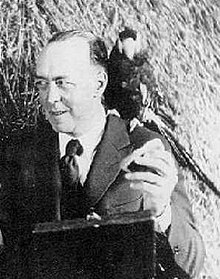 | |
| Born | September 1, 1875 Chicago, Illinois, U.S. |
| Died | March 19, 1950 (aged 74) Encino, California, U.S. |
| Resting place | Tarzana, California, U.S. |
| Occupation | Novelist |
| Period | 1911–1950 |
| Genre | Adventure novel, fantasy, lost world, sword and planet, planetary romance, soft science fiction, Western |
| Notable works | |
| Signature | |
Edgar Rice Burroughs (September 1, 1875 – March 19, 1950) was an American fiction writer best known for his celebrated and prolific output in the adventure and science-fiction genres. Among the most notable of his creations are the jungle hero Tarzan, the heroic Mars adventurer John Carter and the fictional landmass within Earth known as Pellucidar. Burroughs' California ranch is now the center of the Tarzana neighborhood in Los Angeles.
Contents
Biography[edit]
Early life and family[edit]
Burroughs was born on September 1, 1875, in Chicago (he later lived for many years in the suburb of Oak Park), the fourth son of Major George Tyler Burroughs (1833–1913), a businessman and Civil War veteran, and his wife, Mary Evaline (Zieger) Burroughs (1840–1920). His middle name is from his paternal grandmother, Mary Coleman Rice Burroughs (1802-1889).[1][2][3] He was of almost entirely English ancestry, with a family line that had been in North America since the Colonial era.[4]
Through his Rice grandmother, Burroughs was descended from settler Edmund Rice, one of the English Puritans who moved to Massachusetts Bay Colony in the early 17th Century. He once remarked, "I can trace my ancestry back to Deacon Edmund Rice." The Burroughs side of the family was also of English origin and also emigrated to Massachusetts around the same time. Many of his ancestors fought in the American Revolution. Some of his ancestors settled in Virginia during the colonial period, and Burroughs often emphasized his connection with that side of his family, seeing it as romantic and warlike,[5][3] and, in fact, could have counted among his close cousins no less than seven signers of the U.S. Declaration of Independence, including his third cousin, four times removed, 2nd President of the United States John Adams.[6]
Burroughs was educated at a number of local schools. He then attended Phillips Academy, in Andover, Massachusetts, and then the Michigan Military Academy. Graduating in 1895, and failing the entrance exam for the United States Military Academy at West Point, he became an enlisted soldier with the 7th U.S. Cavalry in Fort Grant, Arizona Territory. After being diagnosed with a heart problem and thus ineligible to serve, he was discharged in 1897.[7]
After his discharge Burroughs worked a number of different jobs. During the Chicago influenza epidemic of 1891, he spent half a year at his brother's ranch on the Raft River in Idaho, as a cowboy, drifted somewhat afterward, then worked at his father's Chicago battery factory in 1899, marrying his childhood sweetheart, Emma Hulbert (1876–1944), in January 1900.
In 1903, Burroughs joined his brothers, Yale graduates George and Harry, who were, by then, prominent Pocatello area ranchers in southern Idaho, and partners in the Sweetser-Burroughs Mining Company, where he took on managing their ill-fated Snake River gold dredge, a classic bucket-line dredge. The Burroughs brothers were also the sixth cousins, once removed, of famed miner Kate Rice, a brilliant and statuesque Maths professor who, in 1914, became the first female prospector in the Canadian North. Journalist and publisher C. Allen Thorndike Rice was also his third cousin.[8]
When the new mine proved unsuccessful, the brothers secured for Burroughs a position with the Oregon Short Line Railroad in Salt Lake City.[9] Burroughs resigned from the railroad in October 1904.[10]
Author[edit]
By 1911, after seven years of low wages as a pencil-sharpener wholesaler; Burroughs began to write fiction. By this time, Emma and he had two children, Joan (1908–1972), and Hulbert (1909–1991).[11] During this period, he had copious spare time and began reading pulp-fiction magazines. In 1929, he recalled thinking that
In 1913, Burroughs and Emma had their third and last child, John Coleman Burroughs (1913–1979), later known for his illustrations of his father's books.[13]
In the 1920s, Burroughs became a pilot, purchased a Security Airster S-1, and encouraged his family to learn to fly.[14][15]
Daughter Joan married Tarzan film actor, James Pierce, starring with her husband, as the voice of Jane, during 1932-34 for the Tarzan radio series. The pair were wed for more than forty years, until her death, in 1972.
Burroughs divorced Emma in 1934 and, in 1935, married the former actress Florence Gilbert Dearholt, who was the former wife of his friend (who was then remarrying himself), Ashton Dearholt, with whom he had co-founded Burroughs-Tarzan Enterprises while filming The New Adventures of Tarzan. Burroughs adopted the Dearholts' two children. He and Florence divorced in 1942.[16]
Burroughs was in his late 60s and was in Honolulu at the time of the Japanese attack on Pearl Harbor.[17] Despite his age, he applied for and received permission to become a war correspondent, becoming one of the oldest U.S. war correspondents during World War II. This period of his life is mentioned in William Brinkley's bestselling novel Don't Go Near the Water.
Death[edit]
After the war ended, Burroughs moved back to Encino, California, where after many health problems, he died of a heart attack on March 19, 1950, having written almost 80 novels. He is buried at Tarzana, California, US.[18]
When he died, he was believed to have been the writer who had made the most from films, earning over $2 million in royalties from 27 Tarzan pictures.[19]
Literary career[edit]
Aiming his work at the pulps, Burroughs had his first story, Under the Moons of Mars, serialized by Frank Munsey in the February to July 1912 issues of The All-Story[22][23][24] – under the name "Norman Bean" to protect his reputation.[24][a] Under the Moons of Mars inaugurated the Barsoom series and earned Burroughs US$400 ($10,385 today). It was first published as a book by A. C. McClurg of Chicago in 1917, entitled A Princess of Mars, after three Barsoom sequels had appeared as serials and McClurg had published the first four serial Tarzan novels as books.[22]
Burroughs soon took up writing full-time, and by the time the run of Under the Moons of Mars had finished, he had completed two novels, including Tarzan of the Apes, published from October 1912 and one of his most successful series.
Burroughs also wrote popular science fiction and fantasy stories involving adventurers from Earth transported to various planets (notably Barsoom, Burroughs's fictional name for Mars, and Amtor, his fictional name for Venus), lost islands, and into the interior of the hollow earth in his Pellucidar stories. He also wrote Westerns and historical romances. Besides those published in All-Story, many of his stories were published in The Argosy magazine.
Tarzan was a cultural sensation when introduced. Burroughs was determined to capitalize on Tarzan's popularity in every way possible. He planned to exploit Tarzan through several different media including a syndicated Tarzan comic strip, movies, and merchandise. Experts in the field advised against this course of action, stating that the different media would just end up competing against each other. Burroughs went ahead, however, and proved the experts wrong – the public wanted Tarzan in whatever fashion he was offered. Tarzan remains one of the most successful fictional characters to this day and is a cultural icon.
In either 1915 or 1919, Burroughs purchased a large ranch north of Los Angeles, California, which he named "Tarzana". The citizens of the community that sprang up around the ranch voted to adopt that name when their community, Tarzana, California, was formed in 1927.[25] Also, the unincorporated community of Tarzan, Texas, was formally named in 1927 when the US Postal Service accepted the name,[26] reputedly coming from the popularity of the first (silent) Tarzan of the Apes film, starring Elmo Lincoln, and an early "Tarzan" comic strip.
In 1923, Burroughs set up his own company, Edgar Rice Burroughs, Inc., and began printing his own books through the 1930s.
Reception and criticism[edit]
Because of the part Burroughs's science fiction played in inspiring real exploration of Mars, an impact crater on Mars was named in his honor after his death.[27] In a Paris Review interview, Ray Bradbury said of Burroughs that "Edgar Rice Burroughs never would have looked upon himself as a social mover and shaker with social obligations. But as it turns out – and I love to say it because it upsets everyone terribly – Burroughs is probably the most influential writer in the entire history of the world."[28] Bradbury continued that "By giving romance and adventure to a whole generation of boys, Burroughs caused them to go out and decide to become special."
In Something of Myself (published posthumously in 1937) Rudyard Kipling wrote: "My Jungle Books begat Zoos of [imitators]. But the genius of all the genii was one who wrote a series called Tarzan of the Apes. I read it, but regret I never saw it on the films, where it rages most successfully. He had 'jazzed' the motif of the Jungle Books and, I imagine, had thoroughly enjoyed himself. He was reported to have said that he wanted to find out how bad a book he could write and 'get away with', which is a legitimate ambition."[29]
By 1963, Floyd C. Gale of Galaxy Science Fiction wrote when discussing reprints of several Burroughs novels by Ace Books, "an entire generation has grown up inexplicably Burroughs-less". He stated that most of the author's books had been out of print for years and that only the "occasional laughable Tarzan film" reminded public of his fiction.[30] Gale reported his surprise that after two decades his books were again available, with Canaveral Press, Dover Publications, and Ballantine Books also reprinting them.[31]
Few critical books have been written about Burroughs. From an academic standpoint, the most helpful are Erling Holtsmark's two books: Tarzan and Tradition[32] and Edgar Rice Burroughs;[33] Stan Galloway's The Teenage Tarzan: A Literary Analysis of Edgar Rice Burroughs' Jungle Tales of Tarzan;[34] and Richard Lupoff's two books: Master of Adventure: Edgar Rice Burroughs[35] and Barsoom: Edgar Rice Burroughs and the Martian Vision.[36] Galloway was identified by James Edwin Gunn as "one of the half-dozen finest Burroughs scholars in the world";[37] Galloway called Holtsmark his "most important predecessor."[38]
Selected works[edit]
Barsoom series[edit]
- A Princess of Mars (1912)
- The Gods of Mars (1913)
- The Warlord of Mars (1914)
- Thuvia, Maid of Mars (1916)
- The Chessmen of Mars (1922)
- The Master Mind of Mars (1927)
- A Fighting Man of Mars (1930)
- Swords of Mars (1934)
- Synthetic Men of Mars (1939)
- Llana of Gathol (1941)
- John Carter of Mars (1964, stories from 1940-1943)
Tarzan series[edit]
- Tarzan of the Apes (1912)
- The Return of Tarzan (1913)
- The Beasts of Tarzan (1914)
- The Son of Tarzan (1915)
- Tarzan and the Jewels of Opar (1916)
- Jungle Tales of Tarzan (stories 1916-1917)
- Tarzan the Untamed (1919)
- Tarzan the Terrible (1921)
- Tarzan and the Golden Lion (1922)
- Tarzan and the Ant Men (1924)
- Tarzan, Lord of the Jungle (1927)
- Tarzan and the Lost Empire (1928)
- Tarzan at the Earth's Core (1929)
- Tarzan the Invincible (1930)
- Tarzan Triumphant (1931)
- Tarzan and the City of Gold (1932)
- Tarzan and the Lion Man (1933)
- Tarzan and the Leopard Men (1932)
- Tarzan's Quest (1935)
- Tarzan the Magnificent (1936)
- Tarzan and the Forbidden City (1938)
- Tarzan and the Foreign Legion (1947, written in 1944)
- Tarzan and the Tarzan Twins (1963, collects 1927 and 1936 children's books)
- Tarzan and the Madman (1964, written in 1940)
- Tarzan and the Castaways (1965, stories from 1940-1941)
- Tarzan: the Lost Adventure (1995, rewritten version of 1946 fragment) (completed by Joe R. Lansdale)
Pellucidar series[edit]
- At the Earth's Core (1914)
- Pellucidar (1915)
- Tanar of Pellucidar (1929)
- Tarzan at the Earth's Core (1929)
- Back to the Stone Age (1937)
- Land of Terror (1944, written in 1939)
- Savage Pellucidar (1963, stories from 1942)
Venus series[edit]
- Pirates of Venus (1932)
- Lost on Venus (1933)
- Carson of Venus (1938)
- Escape on Venus (1946, stories from 1941-1942)
- The Wizard of Venus (1970, written in 1941)
Caspak series[edit]
- The Land That Time Forgot (1918)
- The People That Time Forgot (1918)
- Out of Time's Abyss (1918)
Moon series[edit]
- The Moon Maid (1923, revised 1925; The Moon Men)
- Part I: The Moon Maid
- Part II: The Moon Men
- Part III: The Red Hawk
These three texts have been published by various houses in one or two volumes. Adding to the confusion, some editions have the original (significantly longer) introduction to Part I from the first publication as a magazine serial, and others have the shorter version from the first book publication, which included all three parts under the title The Moon Maid.[39]
Mucker series[edit]
- The Mucker (1914)
- The Return of the Mucker (1916)
- The Oakdale Affair (1918)
Other science fiction[edit]
- The Monster Men (1913)
- The Lost Continent (1916; a.k.a. Beyond Thirty)
- The Resurrection of Jimber-Jaw (1937)
- Beyond the Farthest Star (1942)
Jungle adventure novels[edit]
- The Cave Girl (1913, revised 1917)
- The Eternal Lover (1914, revised 1915; a.k.a. The Eternal Savage)
- The Man-Eater (1915)
- The Lad and the Lion (1917)
- Jungle Girl (1931; a.k.a. Land of the Hidden Men)
Western novels[edit]
- The Bandit of Hell's Bend (1924)
- The War Chief (1927)
- Apache Devil (1933)
- The Deputy Sheriff of Comanche County (1940)
Historical novels[edit]
- The Outlaw of Torn (1914)
- I am a Barbarian (1967, written in 1941)
Other works[edit]
- Minidoka: 937th Earl of One Mile Series M (1998, written in 1903)
- The Mad King (1914, revised 1915)
- The Girl from Farris's (1916)
- The Rider (1918)
- The Efficiency Expert (1921)
- The Girl from Hollywood (1922)
- Marcia of the Doorstep (1924)
- You Lucky Girl! (1927)
- Pirate Blood (1970, written in 1932)
- Forgotten Tales of Love and Murder (2001, stories from 1910-1944)
- Brother Men (2005) (Nonfiction)
Books on Edgar Rice Burroughs[edit]
- Master of Adventure: The Worlds of Edgar Rice Burroughs by Richard A. Lupoff
- Tarzan Forever: The Life of Edgar Rice Burroughs, Creator of Tarzan by John Taliaferro
- Golden Anniversary Bibliography of Edgar Rice Burroughs by the Rev. Henry Hardy Heins
- Tarzan Alive by Philip Jose Farmer
- Burroughs's Science Fiction by Robert R. Kudlay and Joan Leiby
- Tarzan and Tradition and Edgar Rice Burroughs by Erling B. Holtsmark
- Edgar Rice Burroughs by Irwin Porges
- Edgar Rice Burroughs by Robert B. Zeuschner
- The Burroughs Cyclopædia ed. by Clark A. Brady
- A Guide to Barsoom by John Flint Roy
- Tarzan: the Centennial Celebration by Scott Tracy Griffin
- Edgar Rice Burroughs: The Descriptive Bibliography of the Grosset & Dunlap Reprints by B. J. Lukes
See also[edit]
Notes[edit]
- ^ A poem by Burroughs was published on October 15, 1910, in the Chicago Tribune as "by Normal Bean", and two more were published in the Tribune in 1914 and 1915.[22] "Norman" was an All-Story typesetter's presumptive correction of "Normal".[24] Burroughs used his own name for his other publications.[22]
References[edit]
- ^ Descendants of Edmund Rice: The First Nine Generations, Edmund Rice (1638)Association, 2010.
- ^ "Edmund Rice Six-Generation Database Online". Edmund Rice (1638) Association. Retrieved January 27, 2011.
- ^ a b Schneider, Jerry L (2004), The Ancestry of Edgar Rice Burroughs (Google Books), Erbville Press, p. 296, ISBN 978-1-4357-4972-6
- ^ "Edgar Rice Burroughs". 16 August 2017.
- ^ Taliaferro, John. Tarzan Forever: The Life of Edgar Rice Burroughs, Creator of Tarzan, pp. 15, 27.
- ^ "Famous Kin of Edgar Rice Burroughs". FamousKin.com. Retrieved October 19,2017.[permanent dead link]
- ^ Slotkin, Richard (1998). Gunfighter Nation. University of Oklahoma Press. p. 196. ISBN 0-8061-3031-8.
- ^ Rice, Michael A. Edmund Rice (1638) Association, Inc.: "Meet Some of Edmund Rice's Descendants: Notable Writers & Entertainers", page 11, Accessed October 11, 2017.
- ^ John, Finn J.D. Offbeat Oregon: "Ill-starred gold-mining venture worked out well for Tarzan fans", March 8, 2015, Accessed October 11, 2017.
- ^ Holtsmark 1986, pp. 3–4.
- ^ Holtsmark 1986, p. 5.
- ^ Burroughs, Edgar Rice (October 27, 1929). "How I Wrote the Tarzan Stories". Washington Post, New York World (Sunday supplement). ERBZine.com. Italic or bold markup not allowed in:
|work=(help) - ^ Nelson, V. J. (15 May 2008). "Obituaries / Danton Burroughs, 1944 - 2008; Tarzan Creator's Heir Protected the Legacy". Los Angeles Times – via ProQuest.
- ^ "A Plane-Crazy America". AOPA Pilot. May 2014.
- ^ "Joan Burroughs". Retrieved 14 February 2015.
- ^ Holtsmark 1986, pp. 12–13.
- ^ Toland, John (1970). The Rising Sun (2003 Modern Library Paperback ed.). Random House. p. 220. ISBN 0-8129-6858-1.
- ^ Holtsmark 1986, pp. 13–15.
- ^ "'Tarzan' Paid Off Big to Burroughs". Variety. March 22, 1950. p. 7. Retrieved April 2,2018.
- ^ "Burroughs, Edgar Rice" Archived 2012-10-16 at the Wayback Machine. The Locus Index to SF Awards: Index of Literary Nominees. Locus Publications. Retrieved April 8, 2013.
- ^ Science Fiction and Fantasy Hall of Fame (official website of the hall of fame to 2004), Mid American Science Fiction and Fantasy Conventions, archived from the original on 2013-05-21, retrieved 2013-03-22.
- ^ a b c d Edgar Rice Burroughs at the Internet Speculative Fiction Database (ISFDB). Retrieved April 8, 2013. Select a title to see its linked publication history and general information. Select a particular edition (title) for more data at that level, such as a front cover image or linked contents.
- ^ "A Virtual Visit to the Nell Dismukes McWhorter Memorial Edgar Rice Burroughs Collection", ERBzine, 4 (19), with photographs.
- ^ a b c Robinson, Frank M, "The Story Behind the Original All-Story", American Zoetrope, 4 (1), archived from the original on March 16, 2013, retrieved April 8, 2013.
- ^ Tarzana Community Profile (PDF), US: NOAA, archived from the original (PDF) on February 4, 2012, retrieved July 4, 2012.
- ^ Holtsmark 1986, pp. 9–10.
- ^ Sagan, Carl (1978-05-28). "Growing up with Science Fiction". The New York Times. p. SM7. ISSN 0362-4331. Retrieved 2018-12-12.
- ^ Weller, Interviewed by Sam (4 February 2019). "Ray Bradbury, The Art of Fiction No. 203" – via www.theparisreview.org.
- ^ Kipling, Rudyard (1937). "8: Working Tools". Something of Myself. London: Macmillan & Co.
- ^ Gale, Floyd C. (June 1963). "Galaxy's 5 Star Shelf". Galaxy Science Fiction. pp. 135–138.
- ^ Gale, Floyd C. (October 1963). "Galaxy's 5 Star Shelf". Galaxy Science Fiction. pp. 119–123.
- ^ Holtsmark, Erling B. Tarzan and Tradition: Classical Myth in Popular Literature. Westport, CT: Greenwood, 1981.
- ^ Holtsmark, Erling B. Edgar Rice Burroughs. Twayne's United States Author Series. Boston: Twayne, 1986.
- ^ Galloway, Stan. The Teenage Tarzan: A Literary Analysis of Edgar Rice Burroughs' Jungle Tales of Tarzan. Jefferson, NC: McFarland, 2010.
- ^ Lupoff, Richard. Master of Adventure: Edgar Rice Burroughs. Lincoln: University of Nebraska Press, 2005.
- ^ Lupoff, Richard. Barsoom: Edgar Rice Burroughs and the Martian Vision. Baltimore: Mirage Press, 1976.
- ^ Gunn, James. Foreword. The Teenage Tarzan by Stan Galloway. Jefferson, NC: McFarland, 2010. p. 3.
- ^ Preface. p. 5.
- ^ ERBzine.
Bibliography[edit]
- Holtsmark, Erling B. (1986), Edgar Rice Burroughs, Boston: Twain, ISBN 0-8057-7459-9
- Spence, Clark C. (2015), History of Gold Dredging in Idaho, Boulder: University Press of Colorado, ISBN 978-1-60732-474-4
- Wikilivres has original media or text related to this article: Edgar Rice Burroughs (in the public domain in New Zealand)
- Works by Edgar Rice Burroughs at Project Gutenberg
- Works by Edgar Rice Burroughs at Faded Page (Canada)
- Works by Edgar Rice Burroughs at Project Gutenberg Australia
- Works by or about Edgar Rice Burroughs at Internet Archive
- Works by Edgar Rice Burroughs at LibriVox (public domain audiobooks)

- Bibliography on SciFan
- Edgar Rice Burroughs at the Internet Speculative Fiction Database
- Works by Edgar Rice Burroughs
- ER Burroughs 1st UK editions list with pictures of the books, Google.
External links[edit]
- Official website (Edgar Rice Burroughs, Inc.)
- "Edgar Rice Burroughs biography". Science Fiction and Fantasy Hall of Fame.
- Mars books (podcasts) at The Fantastic Worlds of Edgar Rice Burroughs[dead link]
- ERBzine.com
- Edgar Rice Burroughs at Library of Congress Authorities, with 347 catalog records
Categories:
- Edgar Rice Burroughs
- 1875 births
- 1950 deaths
- 20th-century American novelists
- People from Tarzana, Los Angeles
- American fantasy writers
- American science fiction writers
- Writers from California
- Writers from Oak Park, Illinois
- Phillips Academy alumni
- Pulp fiction writers
- Science Fiction Hall of Fame inductees
- United States Army soldiers
- Writers from Chicago
- American people of English descent
- Self-published authors
- American male novelists
- Chess variant inventors
- Novelists from Illinois
Purchase an ebook to download in epub, kindle, pdf, or plain text for $2.99.
Sorted By Title
 The Chessman of Mars
The Chessman of Mars 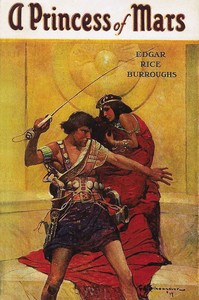 A Princess of Mars
A Princess of Mars  A Princess of Mars
A Princess of Mars 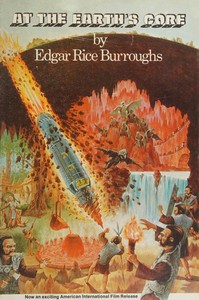 At the Earths Core
At the Earths Core  At the Earths Core
At the Earths Core  Ce la koro de la tero
Ce la koro de la tero 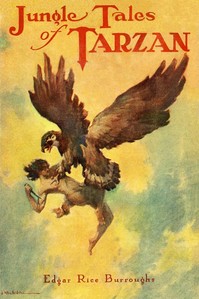 Jungle Tales of Tarzan
Jungle Tales of Tarzan  Out of Times Abyss
Out of Times Abyss 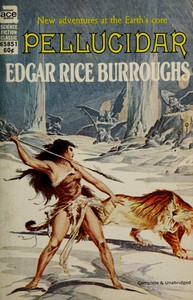 Pellucidar
Pellucidar 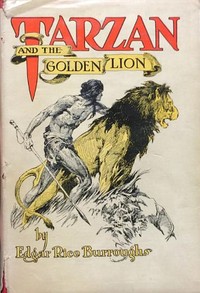 Tarzan and the Golden Lion
Tarzan and the Golden Lion 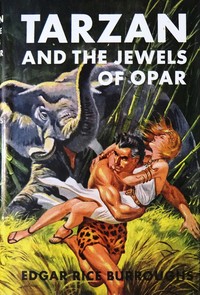 Tarzan and the Jewels of Opar
Tarzan and the Jewels of Opar 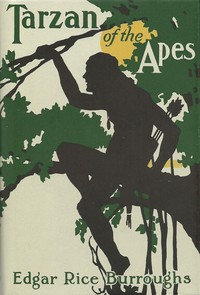 Tarzan of the Apes
Tarzan of the Apes  Tarzan the Terrible
Tarzan the Terrible  Tarzan the Untamed
Tarzan the Untamed  Tarzan, apinain kuningas
Tarzan, apinain kuningas 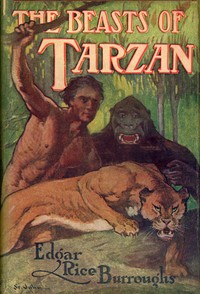 The Beasts of Tarzan
The Beasts of Tarzan  The Efficiency Expert
The Efficiency Expert 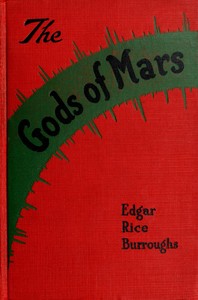 The Gods of Mars
The Gods of Mars 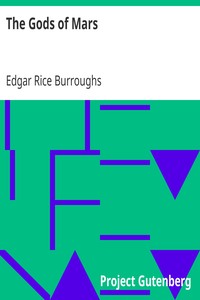 The Gods of Mars
The Gods of Mars  The Land That Time Forgot
The Land That Time Forgot  The Lost Continent
The Lost Continent  The Mad King
The Mad King  The Monster Men
The Monster Men 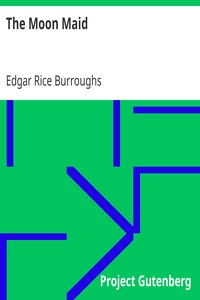 The Moon Maid
The Moon Maid 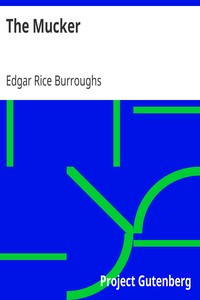 The Mucker
The Mucker  The Oakdale Affair
The Oakdale Affair 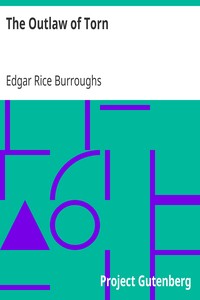 The Outlaw of Torn
The Outlaw of Torn  The People That Time Forgot
The People That Time Forgot 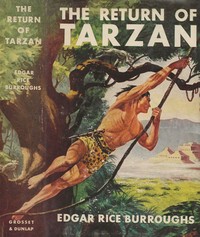 The Return of Tarzan
The Return of Tarzan 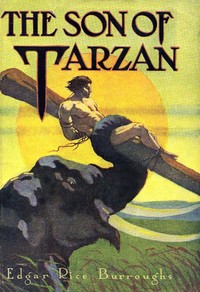 The Son of Tarzan
The Son of Tarzan 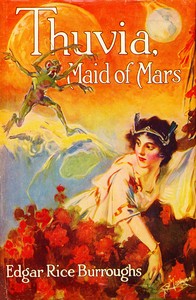 Thuvia, Maid of Mars
Thuvia, Maid of Mars 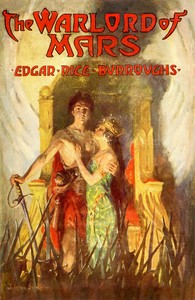 Warlord of Mars
Warlord of Mars 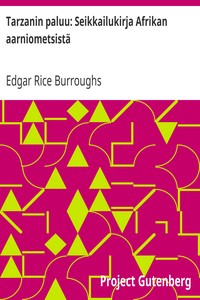 Tarzanin paluu
Tarzanin paluu

